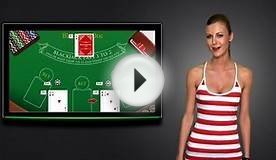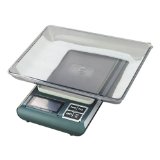Counting cards in Blackjack for Dummies

The Hi-Low System
You'll find there are a wide selection of card counting strategies to pick from. If you're just starting out, though, you'll want to cut your teeth with one of the simpler systems. We'd heartily recommend the Hi-Lo strategy. First outlined in Edward O Thorp's groundbreaking work, Beat The Dealer, this straightforward approach starts you off with a running score of 0. With each new card that is turned up, you either add or subtract from the running score according to the value of the card. Here are the simple rules:
Low Cards - Add one to the running score if the card is a 2, 3, 4, 5 or 6.
High Cards - Subtract one from the running score if the card is a Ten, Jack, Queen, King or Ace.
Neutral Cards - Make no change to the running score if the card is a 7, 8 or 9.
As more low cards are turned up, the running score will be getting higher. And the higher it gets (particularly once it goes into double figures: +10), the more likely it is that there'll be a flood of high cards coming. And that's very good for the player. The dealer will go bust more often when high cards are being turned out. Blackjacks (an Ace plus a card with a value of ten) will crop up more frequently as well, and since these should be giving the player a substantially higher payoff, a greater frequency of blackjacks should see the player winning good money. Therefore, as the running score hits double figures, you should be starting to increase your bets.
Conversely, as more high cards are turned up, the running score will go further into the minus figures. A running score of -10 suggests that a run of low cards may be due shortly. And that's unlikely to be good for the player. With low cards being turned up, the dealer will be going bust less frequently, and few blackjacks will be notched up. In this situation, the house edge will be felt at its fullest, grinding the players into the ground. So when the running score hits -10, you want to be decreasing your bets and battening down the hatches.
Practice Makes Perfect
 That, in a nut-shell, is the Hi-Lo System. It's a very simple approach, but you'll need to be able to calculate the running total almost without thinking about it. Practice again and again with decks of cards. Start by turning up individual cards, and saying whether the card is a plus, minus, or neutral. Once you're able to do this accurately, start calculating the running total instead. The maths isn't hard, but ideally, you won't be wanting to try the system out properly until calculating the total feels like second nature.
That, in a nut-shell, is the Hi-Lo System. It's a very simple approach, but you'll need to be able to calculate the running total almost without thinking about it. Practice again and again with decks of cards. Start by turning up individual cards, and saying whether the card is a plus, minus, or neutral. Once you're able to do this accurately, start calculating the running total instead. The maths isn't hard, but ideally, you won't be wanting to try the system out properly until calculating the total feels like second nature.
Sevens, also known as Laying Out Sevens, Fan Tan, Crazy Sevens or Parliament, is a card game for 3–7 players using a standard deck of 52 cards. Cards are played out to form a layout of sequences going up and down in suit from the sevens (as in many solitaire games). The game is won by emptying one's hand before the other players.
All cards are...



|
3000g/0.1 Mini Electronic Digital Balance Scale Kitchen (stormshop)
|